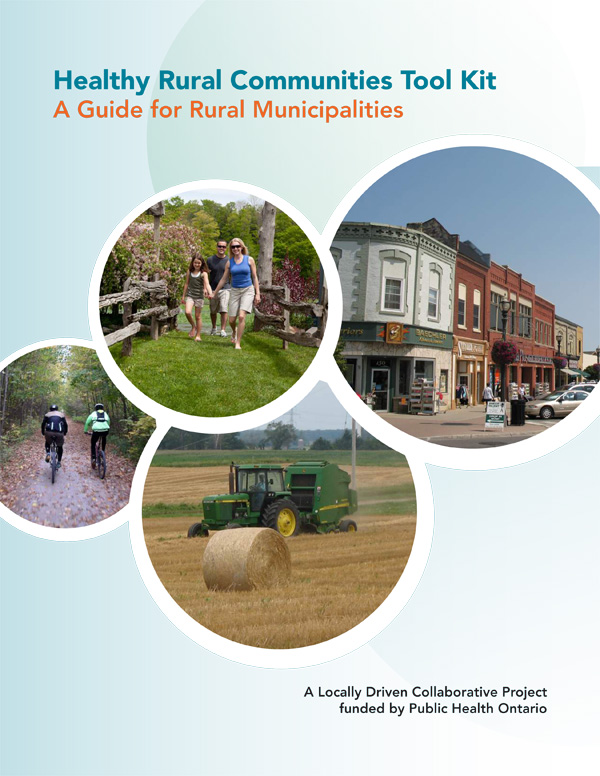Community Design - Rural Communities
Rural communities are home to approximately 20% of Ontario’s residents. They are complex and diverse and can be identified by five main types; urban fringe, agricultural, cottage country, mining and mill towns and Aboriginal.1 Understanding what types of community planning and development strategies to apply in these diverse settings can help build strong, sustainable and healthy rural communities.
Urban Vs. Rural Community Design
The Provincial Policy Statement (PPS) and its fundamental principles direct land use planning and development that reflects Ontario’s diversity. Policies within the PPS direct development of rural areas and rural lands that support the:
- building of strong healthy communities
- wise management of resources
- protection of public health and safety2
Challenges
Rural communities face numerous challenges including; geography, population changes, employment, health and economic factors.3 4 5
Smart Growth
A development approach called Smart Growth (PDF) supports economic growth, strong communities and environmental health using ten principles.

Download the Healthy Rural Communities Toolkit
- Mix land uses.
- Take advantage of compact design.
- Create a range of housing opportunities and choices.
- Create walkable communities.
- Foster distinctive, attractive communities with a strong sense of place.
- Preserve open space, farmland, natural beauty and critical environmental areas.
- Direct development towards existing communities.
- Provide a variety of transportation choices.
- Make development decisions predictable, fair and cost effective.
- Encourage community and stakeholder collaboration in development decisions.
Putting Smart Growth to Work in Rural Communities (PDF) is a resource that applies the Smart Growth principles to rural communities. Rural decision-makers can use the strategies and policy tools to balance competing goals while creating vibrant, sustainable communities. The following three goals can serve as a framework for future growth in rural communities.6
- Support the rural landscape.
- Help existing places thrive.
- Create great new places.
Planning Opportunities for Healthy Rural Communities
The Healthy Rural Communities Tool Kit provides direction for actions and activities that support healthy rural communities:
- Development of planning documents (official plan policies, master plans, zoning by-laws).
- Understanding the connection between planning, health, social and the environment.
- Measuring the impact of a planning initiative / practice.
- Building partnerships between municipalities, agencies and the community.
- Ensuring collaboration between the municipality (administration, staff, politicians) and community players.
- Engaging the community using creative approaches.
- Seeking municipal council and municipal staff support.
- Finding project champions.
- Finding a community-based group that is passionate about the initiative.
- Keeping initiatives manageable.
Many of the challenges facing rural communities are regional and when appropriate, local governments can cooperate across boundaries to develop collaborative, solutions to challenges facing individual communities.5
Details on how to incorporate healthy community design into rural planning processes can also be found on the Healthy Rural Communities website and in the Linking Health and the Built Environment in Rural Settings report.7
Date of creation: February 22, 2017
Last modified on: May 13, 2022
References
1Lauzon, A., Ragetlie, N., Caldwell, W., Douglas, D. (2017). The State of Rural Canada: Ontario. Retrieved from
http://sorc.crrf.ca/ontario
5Caldwell, W.J., Kraehling, P., Kaptur, S., Huff, J. (2015). Healthy Rural Communities Tool Kit: A Guide for Rural Municipalities. University of Guelph, Guelph, Ontario. Retrieved from
https://www.ruralhealthycommunities.ca/toolkit
